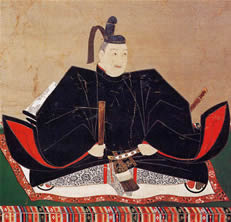Tokugawa Hidetada - Japanese Ruler

Hidetada nominally assumed the title of shogun in 1605 when his father voluntarily retired, but as long as Ieyasu lived, Hidetada’s role was to learn from and implement the policies of his father. He was a careful student, who watched his father build his realm for the family and the bakuhan system.
Among Hidetada’s achievements were the continued organizing of the Bakufu and development of domestic commerce. Both of these ensured the Tokugawa family’s political and economic dominance in Japan.
In 1614–15, Hidetada helped his father in leading a victorious campaign against Osaka castle that ended the residual power of the Toyotomi family. From 1616 onward, he boldly tamed the domains of vassals who might challenge his authority.
Domestic commerce grew with the expanded control of Hidetada’s government. However, he was highly suspicious of foreign traders, missionaries, and those Japanese who had converted to Christianity.
Tokugawa Hidetada reinforced Ieyasu’s ban on Christianity. In 1617, he had four missionaries executed. He later ordered the execution of 120 missionaries and Japanese Christians and banned any import of books related to the Christian religion.
Hidetada’s severe reservations about all things foreign extended to their trading ships as well. In order further to regulate foreign presence, he ordered all foreign ships, other than Chinese, to dock only in the ports of Nagasaki and Hirado.
The British had already pulled out of Japan because of nonprofitable trade relations. Hidetada severed all relationships with the Spanish, of whom he was highly suspicious because of their Christian influence. Hidetada effectively isolated Japan, a stance his son terminated when he became shogun.
Hidetada had established a relationship with the imperial family through the marriage of his daughter to a member of the royal family. This relationship further solidified the base of the Tokugawa family. In 1623, Hidetada abdicated in favor of his son Iemitsu but continued to influence policy of the bakufu as retired shogun until his death.
- Christian Century In Japan
Christian Century in Japan Francis Xavier, a founder of the Society of Jesus, arrived in Japan in 1549, inaugurating a century of Catholic Christian missionary activity in that country. After enjoying enormous success, Christians suffered brutal persecution...
- Exclusion Laws In Japan
Exclusion Laws in Japan In 1534, the first Portuguese ship arrived in southern Japan bringing a cargo that included firearms. For the next hundred years, Japanese-Western trade flourished and Christian missionaries converted many Japanese to Catholicism....
- Japan Tokugawa Bakuhan System
Tokugawa Bakuhan System The Tokugawa shoguns were the de facto rulers of Japan from 1603 to 1867, when emperors, symbolic rulers of the country, bestowed the title of shogun on the Tokugawa clan. After the Battle of Sekigahara in 1600, the first shogun,...
- Tokugawa Ieyasu - Japanese Ruler
Tokugawa Ieyasu was granted by the Japanese emperor, the title of shogun in 1603; his family was to rule Japan until 1867. In 1605, his son, Tokugawa Hidetada, officially took the office of the shogun, but Ieyasu remained the ruler from behind the scenes...
- Toyotomi Hideyoshi - Japanese General
Toyotomi HideyoshiToyotomi Hideyoshi was a Japanese lord who completed the unification of Japan begun by Oda Nobunaga and launched two invasions of the Korean Peninsula. Hideyoshi was born the son of a peasant and became a soldier in the army of Oda Nobunaga...
